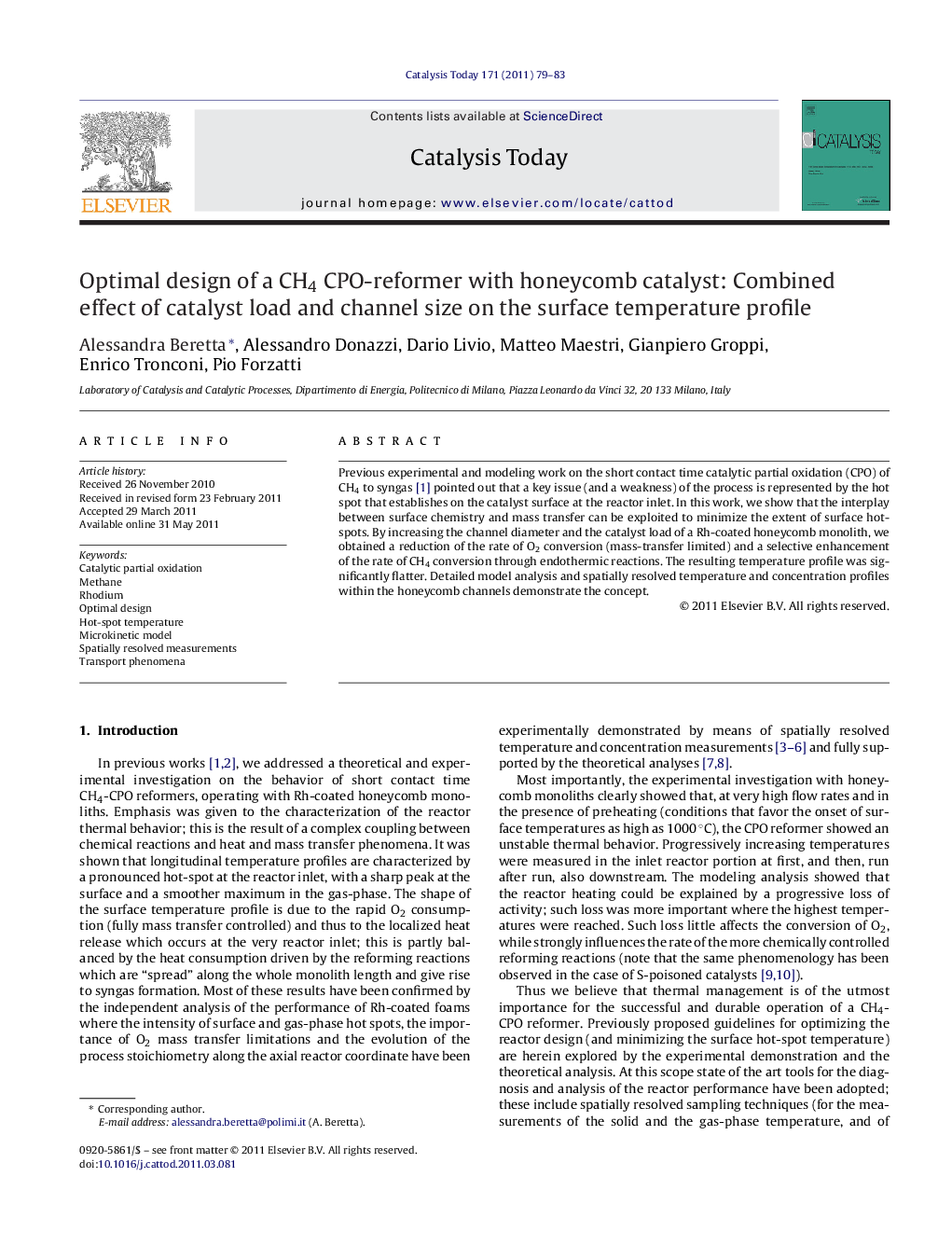| Article ID | Journal | Published Year | Pages | File Type |
|---|---|---|---|---|
| 55930 | Catalysis Today | 2011 | 5 Pages |
Previous experimental and modeling work on the short contact time catalytic partial oxidation (CPO) of CH4 to syngas [1] pointed out that a key issue (and a weakness) of the process is represented by the hot spot that establishes on the catalyst surface at the reactor inlet. In this work, we show that the interplay between surface chemistry and mass transfer can be exploited to minimize the extent of surface hot-spots. By increasing the channel diameter and the catalyst load of a Rh-coated honeycomb monolith, we obtained a reduction of the rate of O2 conversion (mass-transfer limited) and a selective enhancement of the rate of CH4 conversion through endothermic reactions. The resulting temperature profile was significantly flatter. Detailed model analysis and spatially resolved temperature and concentration profiles within the honeycomb channels demonstrate the concept.
